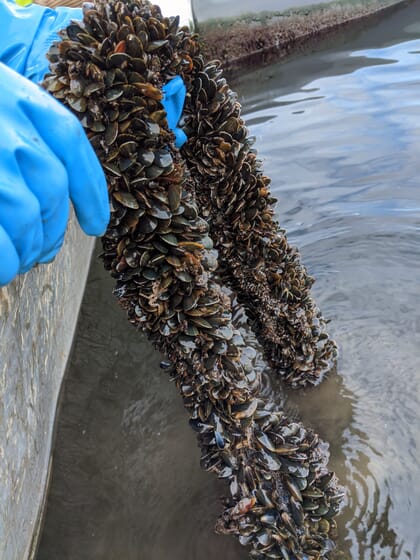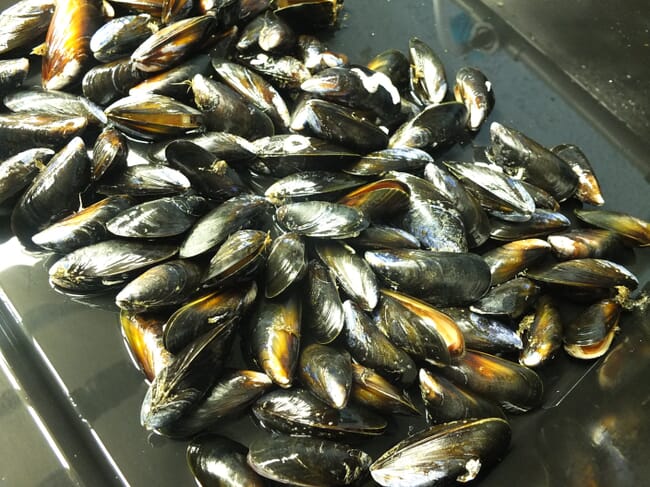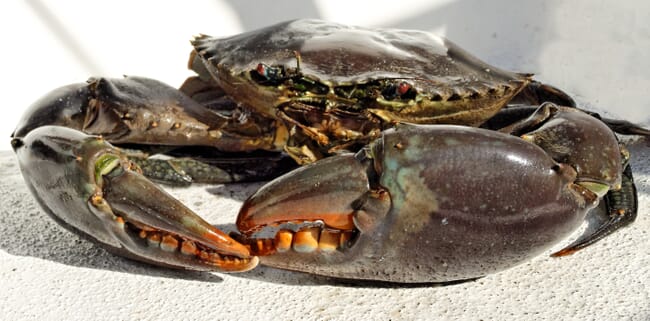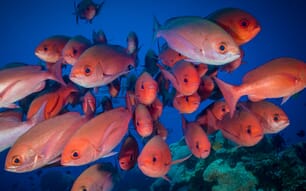A new analysis published in Frontiers in marine science uses the future food framework to analyse the global shellfish industry. As production of crustaceans and molluscs intensifies, many aquaculture advocates have championed shellfish as a sustainable source of animal protein.

© Judith Brown
The environmental benefits of shellfish aquaculture, like water nutrient cycling and carbon sequestration, have also been highlighted. Despite these potential benefits, the industry isn’t operating at its full capacity. The researchers explain that shellfish aquaculture could make a substantial contribution to global food security if farms become more efficient and shellfish becomes more affordable for global consumers.
What makes something a future food?
According to a study by Parodi et al in 2018, a future food is a commodity that has a rapid and dynamic production capacity, thanks to advancing technology, and has the potential to develop at scale. An increase in scale lowers production costs and environmental inputs, making the food accessible and environmentally sustainable. Parodi outlined four key characteristics for future food:
- There is an adequate supply
- Production costs can be reduced
- It is environmentally friendly
- It is produced by sustainably exploiting resources
Beyond this broad scope, the researchers focused on key production and consumption indicators for shellfish to qualify as future foods.
Coping with environmental stressors
As the effects of climate change become more pronounced, future food species need to withstand environmental stressors like temperature fluctuation and changes in water quality. An ability to mitigate the impacts of climate change would also be a bonus.
The researchers note that many species of crustaceans and molluscs can experience significant environmental changes and grow to maturity. In many cases, lower temperatures translated to decreased growth and longer intermoult periods, while warmer temperatures stimulated growth.
Shellfish do have one key shortcoming in this area: they have low survival rates when they are kept in captivity. Finding ways to improve the resilience of cultured shellfish by developing new breeding technologies and optimising farm conditions would be a key milestone for the shellfish industry.
Capitalising on biological and technical know-how
Shellfish farmers need to have extensive information about culture techniques and the biological processes of their target species to be successful. Without this background information, achieving sustainable mass production isn’t guaranteed.
This indicator has mixed results, depending on the shellfish species. The researchers note that studies on the biology and farming of whiteleg shrimp led to a production boom in the 1970s. Conversely, lack of breeding knowledge for Scylla olivacea, a species of mangrove crab, has left the industry reliant on wild-caught seed and gravid females – stalling the industry’s growth. The researchers report that the necessary reference information is available for many species of crabs, marine bivalves, shrimps and other shellfish. However, gaps in the research will limit the industry’s potential.

© Tom Morton
The benefits of speed
As a general rule, aquatic species with a short life cycle are better candidates for aquaculture – producers can generate more food in a shorter period of time if farm cycles take months instead of years.
Marine shellfish species perform well on this indicator when compared to finfish species. Crustaceans and molluscs can usually grow to market size in less than two years, while popular marine fish like grouper can take six years to reach maturity. This makes shellfish excellent future food candidates.
Consumer concerns
When the researchers move away from production indicators and focus on the end consumer, nutritional and economic concerns begin to influence the viability of shellfish as future food.
From a nutrition standpoint, an FAO report from 2016 lists shellfish as one of the largest sources of animal protein globally. Core nutrients like digestible proteins, essential amino acids, long-chain polyunsaturated fats, vitamins and carotenoids are all present in shellfish.
The researchers note that consumer demand for shellfish and other seafood products is driving the rapid expansion of the aquaculture sector – and demand is set to increase further in the coming decades. Despite this rosy outlook, the industry isn’t operating as efficiently as it could. There are also concerns that global consumers may not be able to afford shellfish. Using farmed shellfish to achieve global food security is not only dependent on producing sufficient supplies. It must also be affordable for large portions of the population for it to make a meaningful contribution towards food security.

Future issues for shellfish aquaculture
Despite the promising results for many indicators, the researchers note that shellfish aquaculture has some drawbacks as a way to produce future food. Many shellfish species are cannibalistic and key research on how to mitigate that behaviour is scarce. The losses from cannibalism also put economic pressure on shellfish producers.
The researchers also note that growers will face continued pressure to cut production costs to make market-ready shellfish more available. In many cases, this means reducing feeding costs (for crustaceans) and adopting more efficient and sustainable farming practices. Genetic techniques, like selective breeding for fast-growing strains, would also make farms more productive. Adopting these strategies will also go a long way towards making shellfish aquaculture a core component of global food security.




